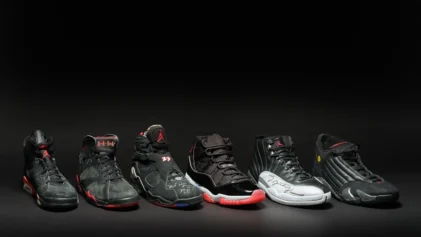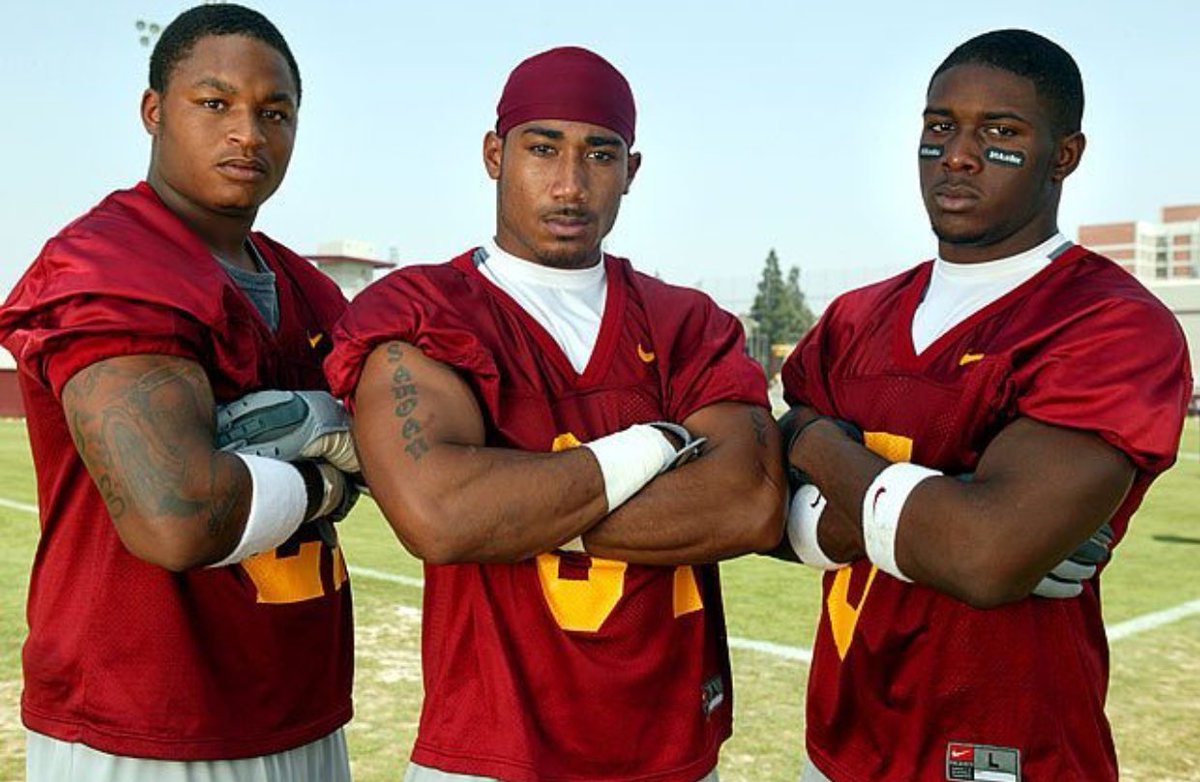When discussing The G.O.A.T. in most athletic professions, the topic causes a heated debate because there are so many worthy candidates to choose from. Such is not the case in women’s basketball, where Cheryl Miller, sister of NBA bomber Reggie, is considered The Michael Jordan of women’s hoops and the undisputed “Queen of the Court.”
Before embarking on an illustrious two-decade career in sports broadcasting and reporting, Miller, the 50-year-old California icon – who got more buckets than Iggy Azalea got booty – once scored 105 points in a high school game and was a transformative figure as a four-time All-American and three-time Naismith Player of the Year at USC, before beasting the U.S. to a gold medal at the 1984 Los Angeles Olympics.
Miller’s popularity and legend as a basketball pioneer is well-documented. She’s immortalized as the first woman who received acclaim for hustling the hardwood with a dude’s flair. She was a multi-faceted weapon in the mold of a Magic Johnson, but she could score like Elgin Baylor and rebound like Hakeem Olajuwon.
Miller, who honed her game playing against her two brothers in the backyard of their Riverside, Cali. crib, finished her college career among the all-time NCAA leaders with 3,018 points (23.6 per game) and 1,534 rebounds (12.0 per game).
At the close of her career, she was second in NCAA tournament career scoring with 333 points (20.8 per game) and first in career rebounding with 170 (10.6 per game). She was the first USC basketball player—male or female—to have her jersey number retired by the university. She also coached two seasons at USC (1993-95) and reached the NCAA tournament twice.
Then she embarked on a post-basketball journey that would lead her to more accolades and more game-breaking moments as a pioneer in the field of broadcasting and coaching.
The Shadow League had the honor of picking this basketball maestro’s brain, and the jewels she dropped about life, victory, reality checks, failure, and fortitude are official. This will serve her well as she embarks upon her latest endeavor as the Head Coach of the Women’s Basketball team at Langston University, a Historically Black College & University. This is Part I of our exclusive chat with basketball and broadcasting icon, and game-changer, Cheryl Miller.
J.R. Gamble: You coached the Phoenix Mercury to the WNBA Finals in 1998 and lost to the Dynasty Houston Comets led by your former college teammate at USC, Cynthia Cooper.
Cheryl Miller: “It was a surprise first of all when I got the call from Brian Colangelo regarding the job. I thought it was for a consultant position and when he said that he wanted me to coach and be the general manager, I wasn’t sure I wanted to do it. Then he kind of twisted my arm and that was all she wrote. It was a great opportunity for me. I always felt in the back of my mind that after leaving USC, at some point or some stage in my life I wanted to great back to coaching.”
Gamble: Reflect on the early years of the WNBA.
C. Miller: “I think everybody was basically piggybacking the success of the USA Women’s basketball team in Atlanta in the 1996 Olympic Games. We had heard rumors that there was another women’s professional basketball league starting up. There was excitement…and then we heard rumblings that David Stern was going to put something together and once it materialized the excitement was automatically there. Not in my wildest dreams, JR, did I ever imagine walking into our arena our first game and we had over 15,000 fans there. I was shocked. Absolutely shocked and then, from there on, between us and NY, we led the league in attendance at 15,000 plus. The excitement…The support was just awesome and continues to be.”
Gamble: You were just named the new women’s basketball coach at Langston University in Langston, Oklahoma. The school has a total student body of 2,800 students. That’s a huge difference from when you coached at USC, which has 40,000 students. You said you had to Google the school to find out about it. Why does a Hall of Famer take this job at an unheralded HBCU? It’s hardly a powerhouse and don’t you think more prominent schools give you a better chance to recruit top players?
C. Miller: “You know what?”…in theory that sounds great but in actuality it wasn’t the case at all. First of all, 17 years with TNT was an incredible experience. Not only just working with my brother but working with the greatest basketball players around the world was just great and being around some of the best basketball minds was awesome. I wanted to get back into coaching women’s basketball and when I made that decision, it was time to move on and pursue that. I was humbled and shocked at how tough it was to get my foot in the door. To get phone calls returned. To even get into an interviewing stage and process. “
“Out of sheer desperation I called Mike Garrett (Langston Athletic Director) because he’s always been my mentor, and said, ‘Hey Mike’ and I laid it on the table and told him everything that I was going through. He was just shaking his head through the phones lines and said, ‘Cheryl that’s crazy.’ He gave me a couple of tips on how to go out there and successfully get in the door and what not. He said, ‘just be patient, you never know what might turn up’. And a year later I was with some friends at Magic Mountain and he called me and said, ‘Hey Cheryl. I need a coach. Can you come?’ That was it. I was there.”
Garrett has a long-standing relationship with Miller. He values her championship pedigree and is her greatest proponent. He expects her to turn the university into a basketball factory.
“Coach Miller’s credentials as a player and coach are unsurpassed in women’s basketball. We are thrilled and honored to have her here wearing Lion blue on our courts,” said Garrett, Langston athletic director. “Coach Miller has the skills and tools to lead our women’s basketball team to domination in NAIA.”
Miller’s known for her enthusiasm and fiery demeanor on the court and on the sidelines. Miller takes over a Lady Lions squad (20-13) that returns NAIA scoring leader Lynette Holmes (26.5 ppg) and made an impressive run to the national tournament before losing to eventual champion Oklahoma City in the first round. If anything, they will be diligent workers or they’ll feel the wrath of a coach who never stopped grinding hard, even when people told her there was no higher level to reach as a player.
Gamble: What do you bring to Langston and how will it help the program?
C. Miller: “If it was that easy being number one, and being the best in your sport, then everybody would be it. That’s the one thing I stress to my staff and I want these young girls to understand and not only use this on the court, but off the court as well. It takes patience, it takes hunger, it takes dedication and it takes being able to trust and rely, not only on your teammates, but in yourself and learning how to understand who you are and the things you are good at. The things you’re not good at we can work on. And to somehow develop a tough skin, not where everything just bounces off off you, because I am the most sensitive person on this planet. But teaching these young ladies that you’re going to be criticized, but with that criticism you have to know who you are and understand where it’s coming from. Sometimes there’s abundant positives in that so learn and grow and then move.”
Gamble: They say great players don’t make great coaches. Are you an exception to the rule?
C. Miller: “They say a lot of things. I’ve heard that. I’ve heard a lot of people say that Mark Jackson and Jason Kidd wouldn’t be successful as NBA head coaches because it’s their first time. They say it’s hard to make that transition from former player to head coach. I think it depends on the individual. Depends on the situation. The saving grace for me is that I’ve never looked at myself as a great player. I’m just one of many who have helped propel and promote women’s basketball. So I don’t get caught up in who “Cheryl Miller” is. I learn to teach as I go. Do I have all of the answers? Definitely not. And I believe that iron sharpens iron and I make sure that I surround myself with other quality coaches and it’s worked for me.”
Gamble: This year marks the 50th anniversary of The Civil Rights Act of 1964. Can you tie that into how women’s athletic has skyrocketed in the past half century?
C. Miller: “Not only the Civil Rights Act, but you have to throw in Title IX. There are so many things that have happened in my life in which I’ve been the beneficiary of the advancement of women’s rights. I don’t know and my parents didn’t have to sit on the back of a bus, but my grandmother and grandfather, they did. So we were brought up with that knowledge and history so we would never take anything for granted. Like I said I’m one of many who have benefited from the efforts and contributions of so many in our history and it’s not just women’s basketball. It women’s sports across the board. There’s been an explosion and it’s the young girls growing up and now they have a dream, but they, more importantly, have faces that they can attach to that dream. They have faces and role models that they can look at and touch and they identify with. I think that’s where we see the biggest growth and the biggest prosperity that we see in women’s sports today.”
Gamble: Who are the three most influential figures in women’s sports today?
C. Miller: “Wow. That’s a…can I get back to you? There’s so many…You know, the person I identify with and I’m talking just a powerhouse as an athlete and as a woman is Laila Ali. I just think she’s extraordinary and people like her. Also Robin Roberts, although people may not define her as an “athlete” which I do because she played ball. To watch her transcend her sport and transcend the business aspect and also excel in that arena has been amazing. Then the obstacles and health issues she’s overcome personally, just says a lot for me.”
“You know, back in the day it was Jackie Joyner-Kersee.”
“Ann Meyers, Nancy Lieberman… from a pure basketball standpoint. I can go on and on but those are the women that really transcended their sport. They showed a different side to women in sports.”
Stay tuned for Part II of our exclusive interview with Cheryl Miller tomorrow.



